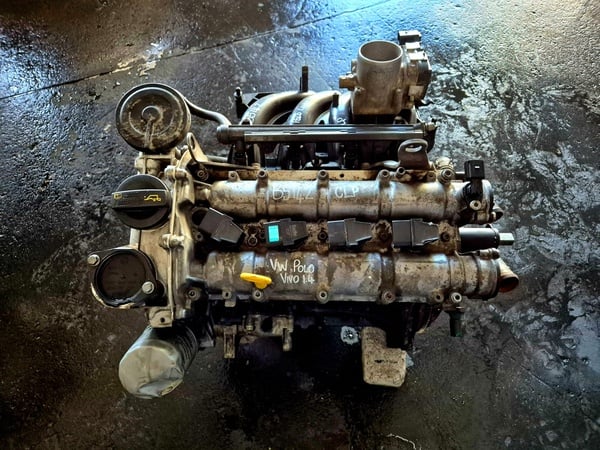Reduce downtime by using a well-maintained clp engine.
Reduce downtime by using a well-maintained clp engine.
Blog Article
Exactly How a Clp Engine Can Improve Effectiveness in Various Industries
The arrival of CLP engines marks a substantial shift in functional performance across numerous industries, driven by their capacity to optimize gas intake and reduce downtime. Industries such as production and logistics stand to acquire substantially from their robust style and regular power output, which guarantee to streamline operations and boost productivity. As companies significantly prioritize sustainability along with performance, the role of CLP engines comes to be much more critical. What stays to be seen is just how these improvements will form the future landscape of industrial procedures and their effect on broader financial patterns (clp engine).
Review of CLP Engines
CLP engines, or Continual Liquid Propellant engines, represent a significant innovation in propulsion modern technology, especially for space applications. These engines use a constant feed system that enables for the sustained expulsion of propellant, causing boosted efficiency and performance contrasted to standard solid or hybrid propulsion systems. By preserving a continuous flow of liquid propellant, CLP engines can attain more exact thrust control, which is vital for steering spacecraft in numerous objective scenarios.
The layout of CLP engines integrates innovative materials and ingenious gas administration systems. clp engine. This causes reduced weight and boosted dependability, necessary factors for long-duration area missions. The continual operation minimizes the risk of combustion instability, a typical obstacle in conventional rocket engines.

Advantages in Manufacturing
The manufacturing of Continuous Fluid Propellant (CLP) engines offers a number of noteworthy benefits that enhance both effectiveness and cost-effectiveness. One of the main benefits is the streamlined manufacturing procedure, which minimizes the complexity connected with traditional propulsion systems. By using liquid propellant, producers can achieve higher accuracy in engine performance, leading to enhanced energy output and decreased waste.
Additionally, CLP engines facilitate a higher degree of modularity, permitting much easier assimilation right into numerous manufacturing lines. This flexibility can considerably decrease lead times and enhance general functional versatility. Using CLP modern technology additionally tends to minimize the need for extensive maintenance as a result of fewer moving parts, which converts into lowered downtime and operational expenses.

Applications in Logistics
Leveraging Continuous Fluid Propellant (CLP) engines in logistics supplies substantial benefits in operational effectiveness and reliability. These engines provide a durable service for various discover here transport demands, making it possible for the smooth activity of products throughout vast distances. The integral design of CLP engines permits regular power result, which converts into smoother and extra foreseeable transportation routines.
Among the crucial applications of CLP engines in logistics is in durable products transportation, where they can drive both ground and aerial automobiles. Their ability to preserve high performance under varying tons conditions makes certain that shipment timelines are satisfied, thus enhancing client fulfillment. Furthermore, CLP engines can be incorporated right into automated logistics systems, promoting real-time tracking and enhancing route planning.
Moreover, the durability of CLP engines lowers maintenance downtime, enabling logistics business to optimize their functional capacities. This is particularly advantageous in warehousing procedures, where effectiveness in managing and transporting items is essential. As logistics continues to evolve, the assimilation of CLP engines stands for a forward-thinking technique that not just boosts efficiency however also sustains the market's expanding demands for integrity and speed.
Effect on Energy Performance
Just How do Continuous Fluid Propellant (CLP) engines improve power effectiveness in transport? CLP engines use a constant circulation of fluid fuel, optimizing burning procedures and maintaining a steady drive output. This layout lessens energy losses connected with conventional burning engines, where gas delivery can differ and lead to ineffectiveness.
The continual procedure of CLP engines enables a much more reliable thermal cycle, leading to higher particular impulse compared to conventional engines. clp engine. This equates to lowered gas intake for the same quantity of work done, significantly reducing operational prices throughout different transport fields, consisting of air travel and maritime industries
Furthermore, the ability of CLP engines to keep optimum efficiency under differing tons conditions reduces the need for constant acceleration and slowdown, additionally enhancing gas effectiveness. Enhanced energy efficiency not just adds to cost savings but also results in reduce greenhouse gas exhausts, straightening with worldwide sustainability objectives.
Future Trends and Innovations
Arising improvements in Constant Fluid Propellant (CLP) engine modern technology promise to reinvent the landscape of transportation effectiveness and sustainability. As markets pivot towards greener options, CLP engines stand at the center, incorporating ingenious materials and design methodologies that boost performance while reducing environmental impact.
One of the most encouraging trends is the adoption of hybrid systems that incorporate CLP engines with renewable resource sources. This synergy can optimize fuel consumption and decrease discharges, aligning with worldwide sustainability objectives. In addition, advancements in computational liquid characteristics (CFD) are facilitating the style of even more aerodynamically reliable engines, bring about minimized drag and improved fuel efficiency.
Moreover, a knockout post the development of clever monitoring systems is readied to enhance operational efficiencies. These systems utilize data analytics pop over to these guys and IoT modern technology to optimize engine performance in real-time, ensuring that the engines run within their most effective specifications.
As research remains to explore alternate propellant formulations-- such as biofuels and artificial fuels-- the future of CLP engines looks encouraging. By utilizing these innovations, industries can not just boost their effectiveness yet also add considerably to a cleaner, more lasting future in transportation.
Conclusion
To conclude, CLP engines stand for a substantial development in performance across numerous sectors. Their ability to optimize gas intake and lower operational prices, integrated with a continuous feed system, enhances power output and operational dependability. The combination of advanced products and less relocating components minimizes upkeep demands, while positioning with sustainability goals placements CLP engines as a crucial technology for the future. Continued innovation in this area assures additional enhancements in effectiveness and environmental efficiency.
Report this page